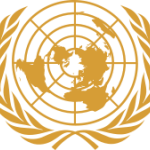- Sektör: NGO
- Number of terms: 31364
- Number of blossaries: 0
- Company Profile:
The United Nations Organization (UNO), or simply United Nations (UN), is an international organization whose stated aims are facilitating cooperation in international law, international security, economic development, social progress, human rights, and the achieving of world peace.
Addition of nitrogen, phosphorous and carbon compounds or other nutrients into a water body, thereby increasing the potential for growth of algae and other aquatic plants. Most frequently, enrichment results from the inflow of sewage effluents or from agricultural run-off.
Industry:Environment
Biological process involving the conversion of nitrogen-containing organic compounds into nitrates and nitrites. It is part of the nitrogen cycle and considered to be beneficial since it converts organic nitrogen compounds into nitrates that can be absorbed by green plants.
Industry:Environment
Ecosystem that provides for the maintenance of life through complete reutilization of available material, in particular by means of cycles wherein exhaled carbon dioxide, fuel and other waste matter are converted, chemically or by photosynthesis, into oxygen, water and food.
Industry:Environment
Bacilliform (rod-shaped) bacterium living in the intestinal tracts of humans and other warm-blooded animals. Its presence in water indicates faecal pollution. There is a maximum number of coliforms (coli number) above which water is no longer suitable for drinking or bathing.
Industry:Environment
Method of valuation used in cost-benefit analysis and environmental accounting. It is conditional (contingent) on the construction of hypothetical markets, reflected in expressions of the willingness to pay for potential environmental benefits or for the avoidance of their loss.
Industry:Environment
Freshwater beneath the earth's surface (usually in aquifers) supplying wells and springs. Because groundwater is a major source of drinking water, there is a growing concern over leaching of agricultural and industrial pollutants or substances from underground storage tanks.
Industry:Environment
Activities that may include (a) preventive environmental protection, (b) environmental restoration, (c) avoidance of damage from repercussions of environmental deterioration and (d) treatment of damages caused by environmental repercussions. See also defensive environmental costs.
Industry:Environment
Collective term for land-use systems and technologies in which woody perennials (trees, shrubs, palms, bamboos and so forth) are deliberately used on the same land management unit as agricultural crops and/or animals, in some form of either spatial arrangement or temporal sequence.
Industry:Environment
Sludge containing a high degree of active bacterial mass that is mixed with primary effluent or raw waste water and kept in suspension by aeration and/or agitation to eliminate organic material from the waste water. After decantation, the sludge is recycled into the aeration tank.
Industry:Environment
Colourless, odourless and non-poisonous gas that results from fossil fuel combustion and is normally a part of ambient air. It is also produced in the respiration of living organisms (plants and animals), and considered to be the main greenhouse gas, contributing to climate change.
Industry:Environment
